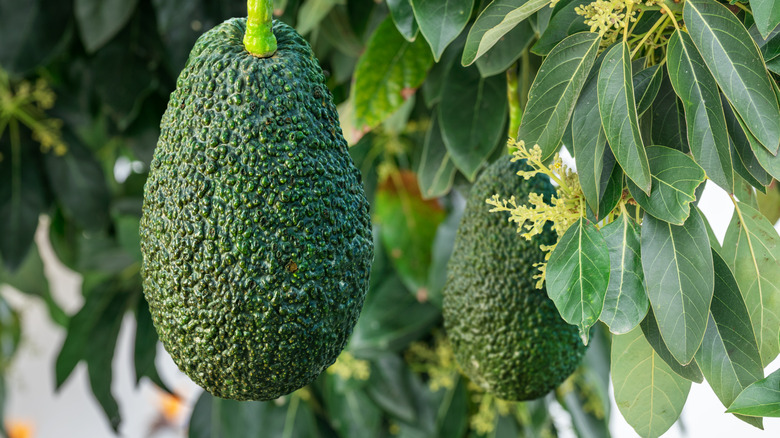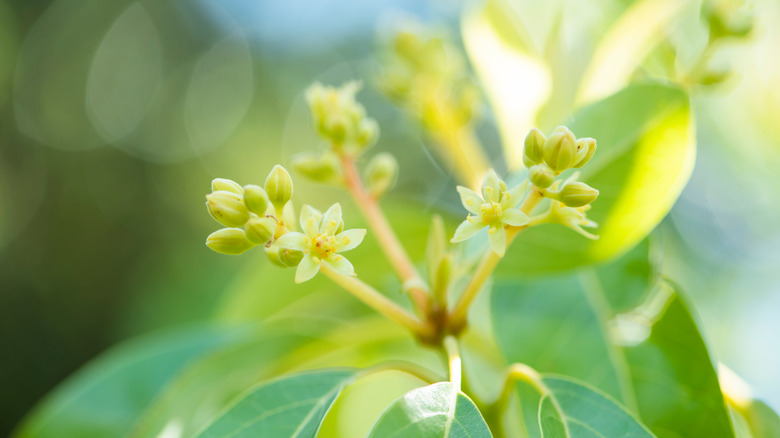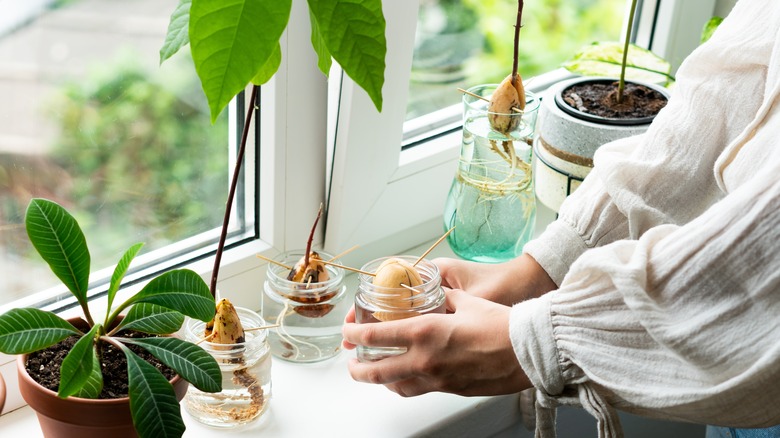Does Shaking Your Indoor Avocado Tree Help It Grow Fruit?
Avocado trees make beautiful houseplants, and if you can get them to fruit, they'll keep your fridge stocked for all your guacamole and avocado toast needs. But "if" is the key word. Indoor avocado growers aren't always rewarded with gorgeous, buttery fruit. Like most flowering plants, avocados have the best fruit-setting rate when bees or the wind pollinate them. You don't have either of those inside your home (hopefully), significantly reducing your chances of getting the coveted fruit. You can mimic a bee and spread pollen yourself with the help of a small tool like a cotton swab, but can you mimic the wind by shaking the tree? For other flowering plants, yes, but you won't have the same success with avocado trees, thanks to their unique flowering schedule.
Avocado trees have male and female parts in their flowers and can successfully self-pollinate. However, the male and female flowers open at different parts of the day, making a simple shake of the tree not so simple. Understanding how avocado trees function and what they need to set fruit will be the key to growing your avocados in the comfort of your home.
Understanding how avocado trees work
You may have heard somewhere that you can't get avocado trees to set fruit unless you have at least two of them. This rule is logically sound based on how avocado trees function. However, what may be misunderstood is that avocado flowers are complete; they have male and female parts and can fertilize themselves. But the tree makes it complicated. Avocado trees have two types, A sequence and B sequence. The A sequence trees open their flowers as females in the morning and as males the next day in the afternoon. The B sequence trees open as females in the first afternoon and then as males the following morning. Staggered sequences increase cross-pollination chances, which may allow more fruit to set.
Growing avocados in less-than-ideal conditions where night and day temperatures fluctuate significantly can help your plant set fruit. Avocado trees function as intended in perfect conditions where the weather is steady. But suppose your nighttime temperatures fall to 20 degrees cooler (in Fahrenheit) than your daytime temperatures. In that case, this will slow down the tree's metabolism to the point that male and female flowers are open simultaneously, making setting fruit a bigger possibility. If you're going to have any success from shaking the tree, it would be with both types of flowers open.
Hand-pollinate indoor avocado trees for more reliable results
Since avocados have a set flowering cycle, two trees are usually used to ensure reasonable pollination rates. But, if you're growing a single tree indoors, you don't have the luxury of wind and pollinators doing all the hard work for you, so you have to be the busy bee in this situation. The most effective way to hand-pollinate avocado trees is to collect male flowers when they're open and keep them in the fridge until the females open. Then, you touch the flowers together and have a pollinated female flower that will turn into fruit. Remember that removing male flowers may reduce how many fruits your tree will produce.
You can achieve hand pollination using simple tools like a cotton swab or paintbrush. Swab the male flower first, then the female flower. The pollen will transfer from tool to flower and pollinate, as a pollinator naturally does. If you're pollinating males and females separately, store your tool in a plastic bag until the females open up. But, if luck is on your side and there are males and females on the tree simultaneously, swab every flower on the tree. Shaking the tree during this time may yield you some fruit, but it likely won't be as effective as the full coverage of swabbing every flower by hand. If you want guaranteed fruit, it's better to stick with the more thorough methods.


